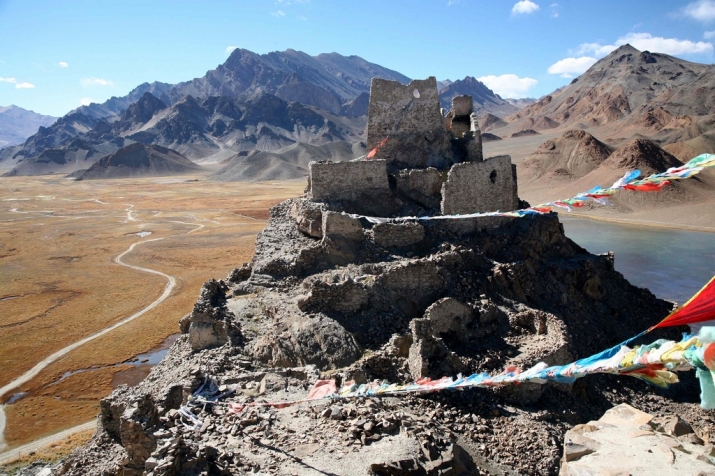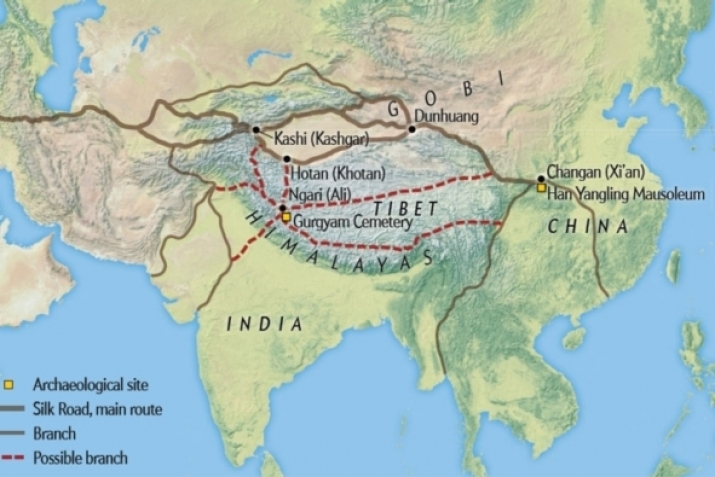NEWS
Archaeological Find Reveals New Silk Road Route
 An ancient fortress and Monastery in Ngari District, far-western Tibet
An ancient fortress and Monastery in Ngari District, far-western TibetRecently discovered archaeological evidence, unearthed from a 1,800-year-old tomb in the Ngari District of Tibet, suggests that the fabled Silk Road network of trade passages that spanned Asia and beyond was even more extensive than is commonly understood, extending its reach into the rugged high altitudes of the Tibetan Plateau.
The ancient network of trade routes, which takes its popular name from the lucrative trade in Chinese silk products that was conducted along its length, beginning during the Han dynasty (207 BCE–220 CE), was key to cultural as well as commercial interaction throughout Asia and extending as far west as the Mediterranean Sea. Trade on the Silk Road was a significant factor in the development of civilizations in China, the Indian subcontinent, Persia, Europe, Africa, and Arabia, enabling long-distance political and economic relations between the civilizations. Although commercial activity was the principal enabler, the Silk Road also led to cultural exchanges and the spread of syncretic philosophies and religious thought, including Buddhism.
A research team that in 2012 began excavating the ancient tomb, discovered in 2005 by Buddhist monks, was surprised to find a large number of goods of Chinese origin inside, suggesting that merchants were traveling from China to Tibet along a previously unknown branch of the Silk Road.
“The findings are astonishing,” said archaeobotanist Houyuan Lu of the Chinese Academy of Sciences’ Institute of Geology and Geophysics in Beijing of the artifacts unearthed, which include pieces of silk woven with the Chinese characters wang (王) and hou (侯), meaning “king” and “princes,” a mask made of gold, and ceramic and bronze vessels. (Scientific American)
 From scientificamerican.com
From scientificamerican.comThe researchers were also astonished to find what appeared to be tea buds some 400–500 years older that the earliest previously documented tea in Tibet, dating to the 7th century. Performing lab analyses of the samples, Lu and his colleagues detected significant amounts of caffeine and theanine, an amino acid abundant in tea, and found that the chemical profiles were similar to tea found in the tomb of a Chinese emperor of the Han dynasty dating back 2,100 years, both of which could be traced to tea varieties cultivated in the southern Chinese province of Yunnan. “This strongly suggests that the tea [found in the Tibetan tomb] came from China,” said Lu. (Scientific American)
The findings give credence to an emerging understanding that the Silk Road possessed a historically significant three-dimensional aspect in that it not only spanned vast linear distances, but also successfully navigated the formidable vertical obstacles presented by some of the world’s great mountains. Martin Jones, an archaeobotanist at the University of Cambridge, said evidence of such early contact between Tibet and China pointed to “a high-altitude component of the Silk Road in Tibet that has been largely neglected.” (Scientific American)
See more
Archaeologists Uncover Another Branch of the Silk Road (Scientific American)














